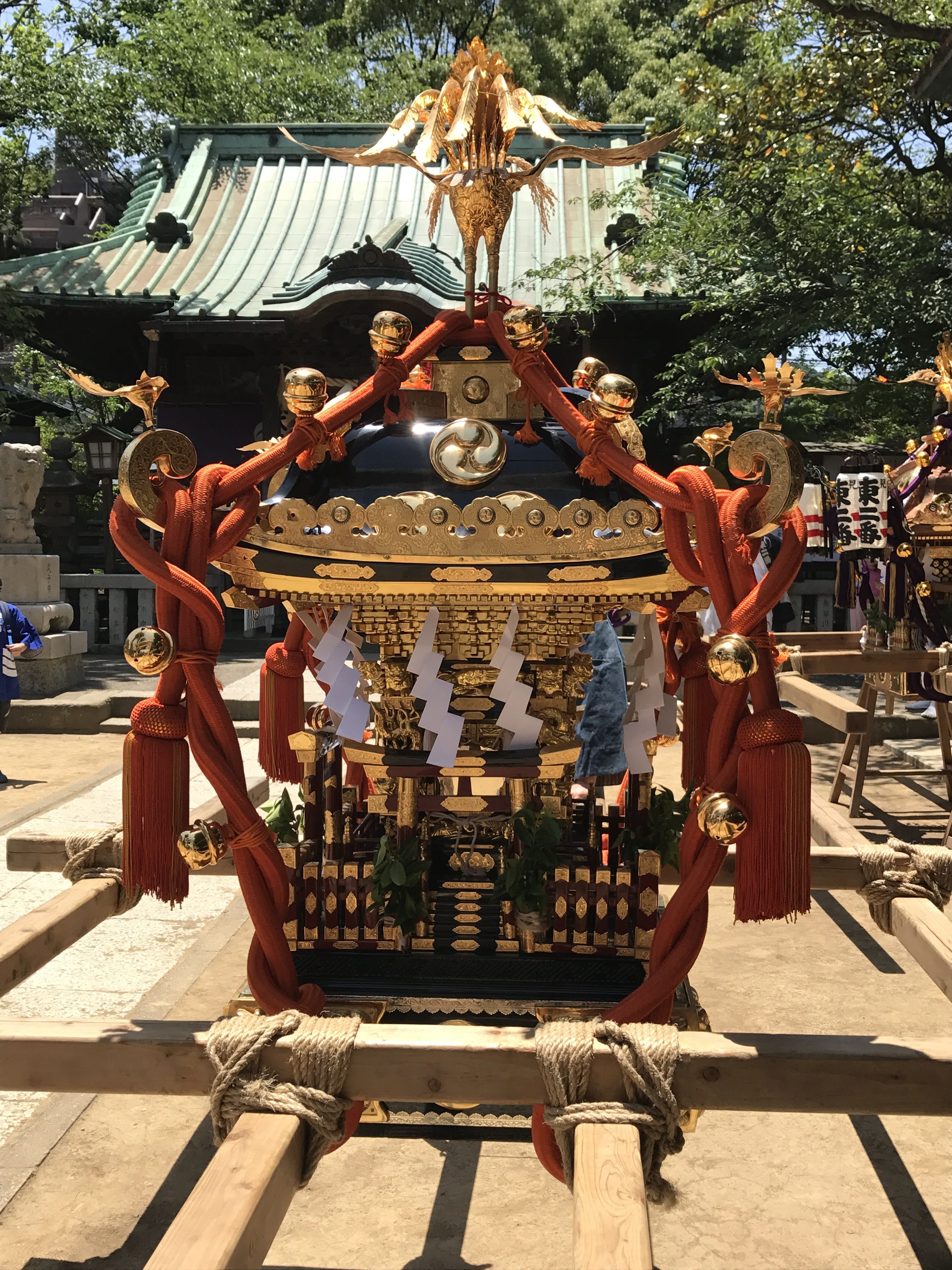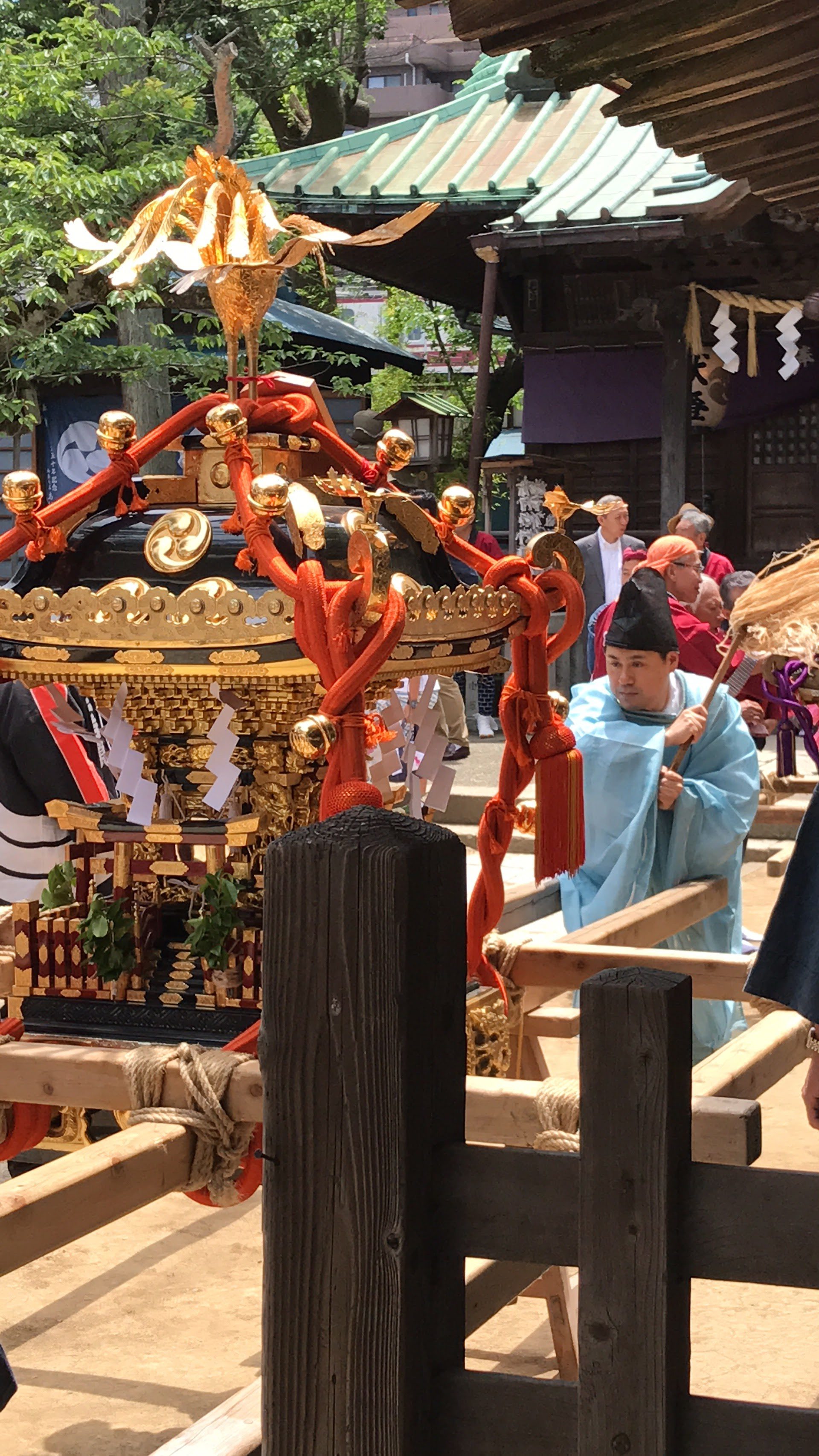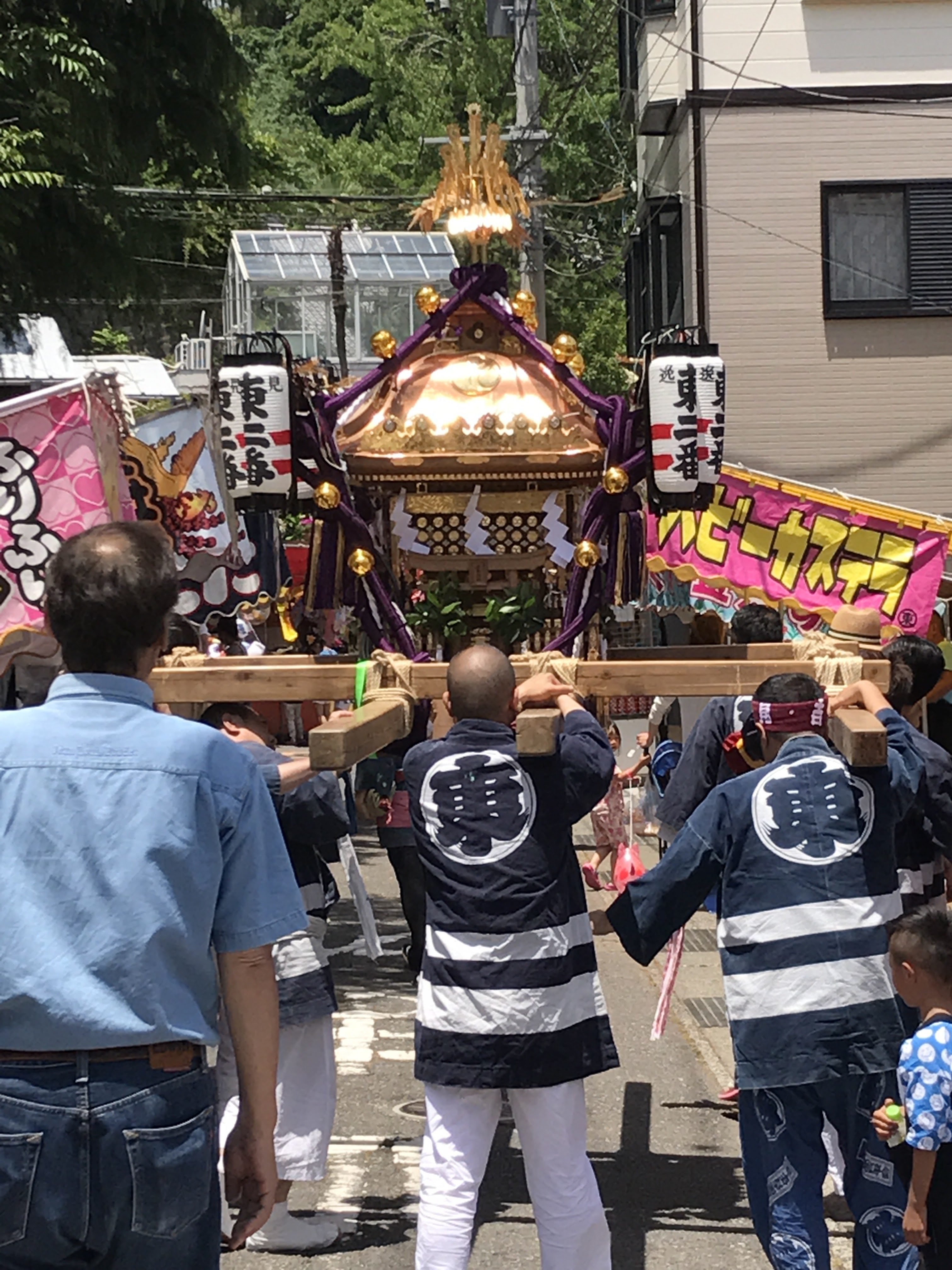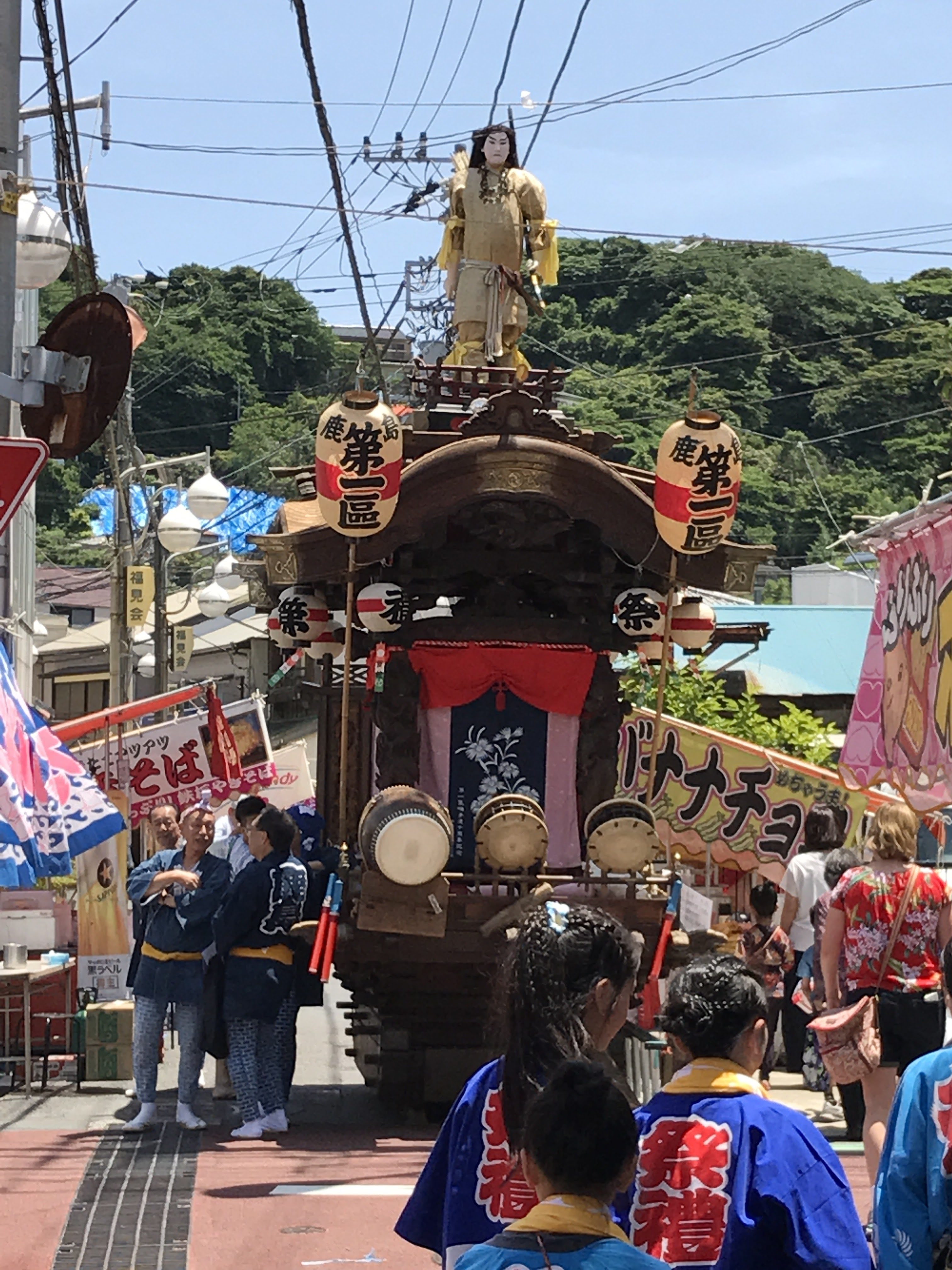
Mikoshi
Pineapple juice dripped down the skewer and in the dirt of the shrine’s courtyard. I wondered if that was disrespectful. Inconspicuous in the shade of an old gnarly tree, I people-watched. Clustered groups of people chatted while children worked their teeth over chocolate covered frozen bananas on sticks. Flakes of chocolate cracked off the bananas and melted on the ground. I guess pineapple juice wasn’t any different.
The anticipation was palpable, but anticipation for what exactly I was not sure. The flier a friend passed on had promised a neighborhood matsuri, a festival featuring, well, festivities. It said to meet at Kashima Shrine by 12:30. It was 12:20.
I squinted to try to see into the actual shrine building – the structure you approach to swing the huge rope bell, bow, clap, toss money, and pray. The inner sanctum was too dark to see anything.
The glint of metal in the sun caught my attention. The crowd hushed and I turned toward the entrance. A group of six or eight men shouldering huge wooden beams heaved and swerved up the stone stairs as one designated “watcher” called out obstacles, including a low-hanging power cord. The beams supported a miniature building, but miniature is relative. It was the size of two refrigerators, adorned with gold and copper, inlaid with intricate wood and stone carvings, and a wrapped with a thick rust-red rope. A golden phoenix was perched at the peak of the roof, with wings turned down and tail feathers spread.
The men moved past me dressed in matching black robes — like a team uniform — and knee high white socks. The toes of the socks separated the big toe from the rest; they would be perfect to wear with sandals but they looked like knee-high Vibrams. Finally, they shuffled just a few feet in front of me, squatted on the watcher’s count, and rested the entire apparatus on a stand. The young men showed their biceps to blushing young women, the old men took handkerchiefs from pockets or waistbands and wiped their sweaty foreheads. Smiles all around.
They had successfully delivered a mikoshi, a portable Shinto shrine.
I inched my way as close to the mikoshi as I dared, only to see another group of men carrying a different shrine in miniature, this one with a gold roof so perfectly polished it looked like liquid. Following them, a herd of children teetered in with a child-size mikoshi. Group after group, all dressed in matching wrap-style shirts, some with female members but most without, carried in portable shrines and set them on different stands throughout the Kashima Shrine courtyard. I stopped counting, but there were probably eight in all.
“Now what?” I asked my husband. He shrugged.
Two men appeared in the dark doorway of the inner shrine and descended the stairs toward the mikoshi nearest them. The first man was old and rotund, though his blue robe and pointed blue hat covered him well. He carried what I can only describe as a witch’s broom if the straw end had gone limp. The second man was rectangular, even older, and dressed in green. He carried a plain wooden box. I strained to see what they were doing but couldn’t between the people, beams, and copper roofs.
When they reached the mikoshi closest to me, the first one delivered to the courtyard and I believe the largest of all, I abandoned my family to get closer. I hit record on my phone, but as soon as I did I felt a twinge of guilt from my long-abandoned Catholic childhood.
Was it sacrilegious to film this? Was this a festival or a Shinto prayer ceremony? In Catholic-land it could not be both. It’s a confession, not a con-fun-ssion. In Japan, wa suggests all aspects of life coexist harmoniously. In all parts of life are all parts of life, and so on.
The round man with the pointy blue hat became gravely serious. He squatted down before the portable shrine and recited an incantation. As he spoke he swayed, and as he swayed the straw swayed, too. The ceremony mesmerized me, and when he stood, I felt something. I have searched for the words to explain it and decided I don’t possess them. Almost…a cleansing. Like the space around me became metaphysically lighter. He placed the broom parallel with the ground, and bowed. He had successfully imbued the mikoshi with the Shrine’s deity.
“Wow,” I said to no one.

The rectangular man in green opened his little wooden box and took out slips of paper I recognized as people’s prayers. He unceremoniously stuffed wads of them inside. After several wads he moved on to the next. When all the mikoshi were blessed and stuffed with prayers, the two men retired into the darkness of the shrine.
The troops of like-dressed people came forward and resettled into their places under the supporting beams. A procession of drummers and flutists led the troops, one by one, out of the courtyard and into the surrounding neighborhood. Like gleeful pallbearers, they chanted and swung the beams, sweating and smiling. The mikoshi danced with them.

People cheered as the portable shrines passed by them. Carts carrying female drummers with painted faces split down the main streets. I picked a cart to follow and spotted a man inside guzzle a can of Asahi beer. Children played in the streets with 10 yen toys they’d won at booths. Shop owners came out front to hail the troops to stop in front of their business for a special blessing. And it continued like this long into the night.
A community celebrating good will, good wishes, and good times. This is the Japanese matsuri.


Recent Comments